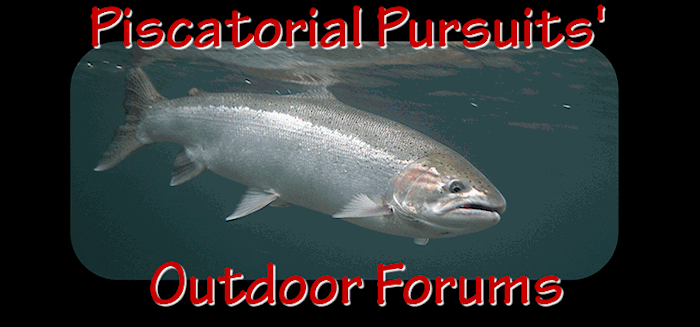Crap! Do we have to re-post every frickin' detail from every study of every species ever done to get the same old points across? Every time I begin to think we have a highly informed readership on this forum, some of you will post up the same old incorrect information that has been posted and refuted repeatedly in the past.
First and foremost! It's biology and ecology, so every one of you who makes an encompassing statement and holds it as the universal truth is flat out wrong! There are always exceptions. That doesn't make the general statements wrong. It only means that the general truths are generally true, but not invariably true. And just because there are exceptions, that doesn't make it a good idea to try and make that example into the norm. In fact, that would generally be stupid.
H x H mating and H x W steelhead mating usually but not invariably means the resulting return of reproductively fit adults is not statistically different than zero. OK, that means it's usually zero. But it's not always zero. The take home point is that zero reproductive success is not a good thing, whether it happens every single time, or just almost every time. Therefore such matings are not desirable if the intent is to manage for healthy fish populations.
McMahon,
You're in Idaho, therefore all your steelhead are summer run. If you've been paying close attention to this forum you know that the zero natural reproductive success attends mainly to coastal winter run steelhead stocks like the Chambers Creek winter steelhead. And you would, or should, remember that hatchery summer steelhead, of several stocks, while having initially poor natural reproductive success, is higher than that of the Chambers Creek fish, i.e., greater than zero success. So yes, indeed, naturally self-sustaining summer steelhead populations can and have been created from hatchery origin summer steelhead. However, that doesn't make it a preferred option; it just means that it can be done, and is therefore a useful tool in the fish manager's toolbox.
Wild steelhead populations are being recovered with significant use of hatchery summer steelhead in the Snake River system tributaries and mid-Columbia River tributaries. The use of late-timed hatchery winter steelhead in the Cowlitz River is re-creating naturally reproducing "wild" winter steelhead in the upper Cowlitz River system. The reason hatchery steelhead are being used in these examples is because there were few wild steelhead left, or in the case of the Cowlitz, zero wild steelhead left upstream of the dams. Just because it can be done is not reason enough that I would ever say it's OK to extirpate wild runs cuz we can just bring them back using hatchery fish, because while it will be successful in some cases, we cannot count on it being successful in every case.
Same applies to your chinook example, except that most hatchery salmon do not seem to be as poorly suited to successful natural reproduction as hatchery Chambers Creek winter steelhead.
Steelhead Stalkers,
Your statement is strong proof that our Piscatorial Pursuits educational mission is far from concluded. The short answer is that you're so flat out wrong and far off, but I won't say stupid, just incredibly misinformed. Please pay closer attention to the informative stuff on PP, and you will find that you no longer post stupid sh!t on PP any more.
Stlhdr1,
The amount of good information on historic run compositions is limited. But there is enough to know that wild winter run steelhead entered coastal and PS rivers from as early as Thanksgiving to as late as some time in April. What we don't know so much about is the spawn timing of all the discreet run segments. Topwater gets at some of it in regards to spawn timing depending on spawning location and stream type. However, we don't know that early run winter fish were invariably early spawners. Early run timing is just as likely to have been associated with early spawn timing in low elevation tributaries that warm up earlier in the late spring and summer and decline in flow AND with normal spawn timing in very upper mainstems and upper system tributaries fed by snow and glacial meltwater.
It comes down to the fact that living systems are complex. Every time some one has a simple explanation for you, you can bet dollars to doughnuts that they are wrong. Generally, but not always, you will win (see reference to general statements above).
Study hard friends; there will be a quiz next week, and your score will be entered into your PERMANENT record.
Sg













 Previous Topic
Previous Topic Index
Index



